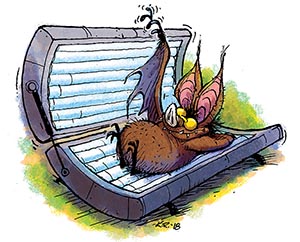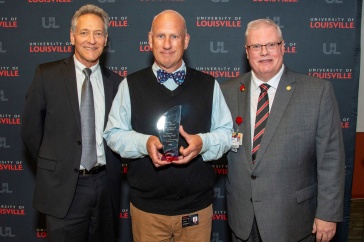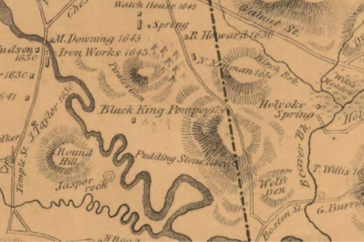
After nearly a decade of studying a pathogen that has wiped out some 90 percent of the bat population in parts of the U.S. and Canada, a team of researchers based out of the U.S. Forest Service and UNH has made a potentially game-changing discovery: Pseudogymnoascus destructans, the fungus that causes white nose syndrome, can be destroyed by ultraviolet light.
UNH research scientists Jeffrey Foster and Kevin Drees worked for three years with Daniel Lindner and Jonathan Palmer of the U.S. Forest service analyzing the DNA of P. destructans before they identified a gap in the genome that represented a crucial enzyme needed to repair DNA damage caused by ultraviolet light. Preliminary tests indicate that even very small doses of UV light are enough to kill the fungus. Much more work is needed to figure out how to effectively — and efficiently — deliver the UV treatment to affected bats, though one option is a quick-pulse procedure that the Forest Service’s Lindner likens to “a mini tanning bed for bats.”
P. destructans attacks bats while they hibernate and has caused the death of millions of bats in caves and mines across North America by accelerating the burn of fat stores the animals need to make it through winter and damaging deep skin tissues. Left unchecked, white nose syndrome could lead to the extinction of multiple bat species, including the most common, the little brown bat, which is capable of eating half its body weight in insects every night.

















































